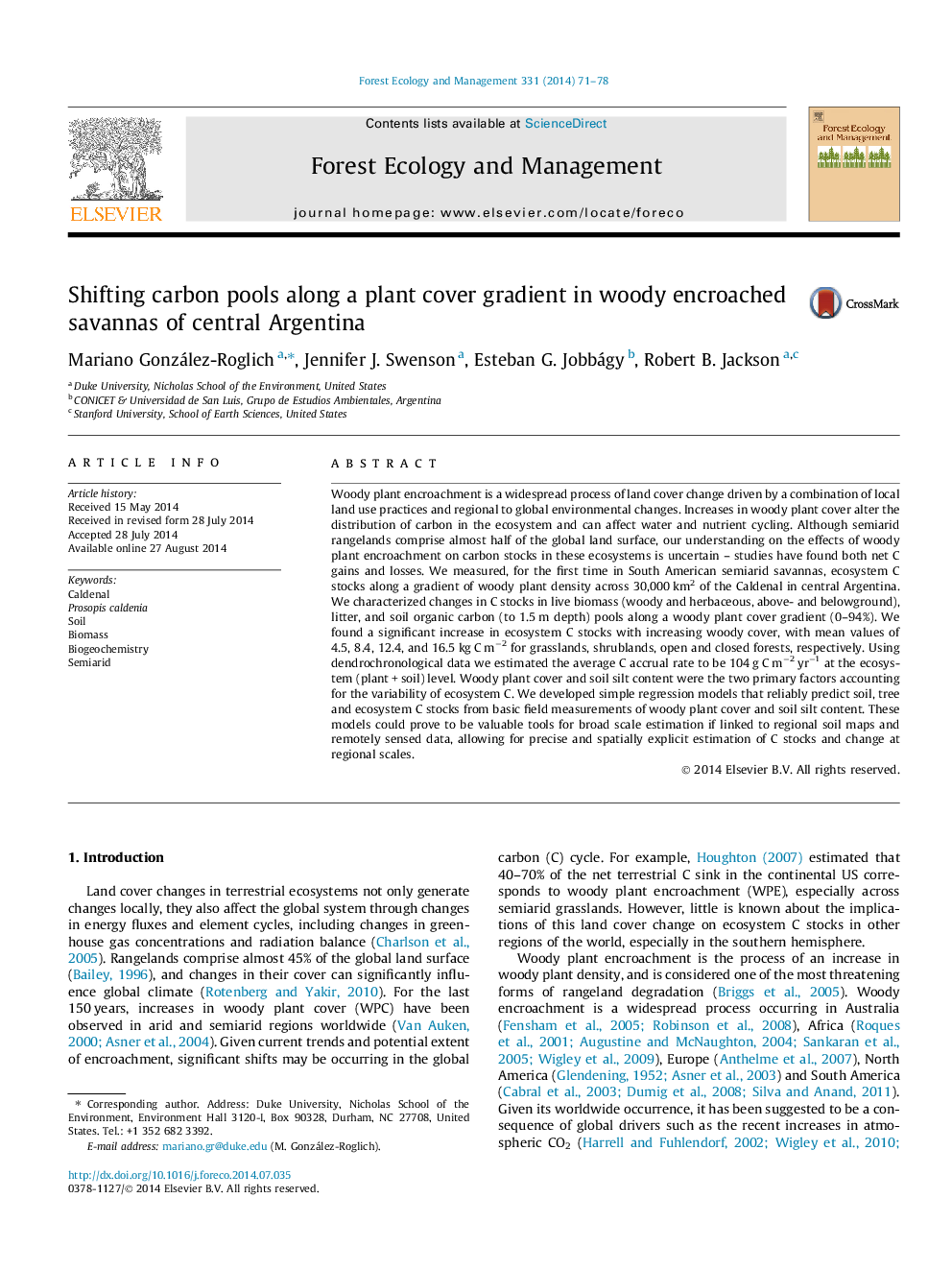| Article ID | Journal | Published Year | Pages | File Type |
|---|---|---|---|---|
| 86443 | Forest Ecology and Management | 2014 | 8 Pages |
•We found a significant increase in ecosystem C stocks with increasing woody cover.•Grassland ecosystems have on average 4.5 kg C m−2 while closed forests have 16.5.•Average C accrual rate to be 104 g C m−2 yr−1 at the ecosystem (plant + soil) level.•Woody plant cover and soil silt content explained most of the C increases.•We developed simple regression models to predict soil, tree and ecosystem C stocks.
Woody plant encroachment is a widespread process of land cover change driven by a combination of local land use practices and regional to global environmental changes. Increases in woody plant cover alter the distribution of carbon in the ecosystem and can affect water and nutrient cycling. Although semiarid rangelands comprise almost half of the global land surface, our understanding on the effects of woody plant encroachment on carbon stocks in these ecosystems is uncertain – studies have found both net C gains and losses. We measured, for the first time in South American semiarid savannas, ecosystem C stocks along a gradient of woody plant density across 30,000 km2 of the Caldenal in central Argentina. We characterized changes in C stocks in live biomass (woody and herbaceous, above- and belowground), litter, and soil organic carbon (to 1.5 m depth) pools along a woody plant cover gradient (0–94%). We found a significant increase in ecosystem C stocks with increasing woody cover, with mean values of 4.5, 8.4, 12.4, and 16.5 kg C m−2 for grasslands, shrublands, open and closed forests, respectively. Using dendrochronological data we estimated the average C accrual rate to be 104 g C m−2 yr−1 at the ecosystem (plant + soil) level. Woody plant cover and soil silt content were the two primary factors accounting for the variability of ecosystem C. We developed simple regression models that reliably predict soil, tree and ecosystem C stocks from basic field measurements of woody plant cover and soil silt content. These models could prove to be valuable tools for broad scale estimation if linked to regional soil maps and remotely sensed data, allowing for precise and spatially explicit estimation of C stocks and change at regional scales.
